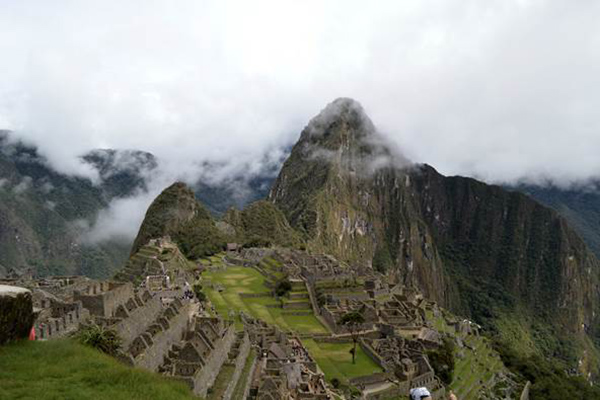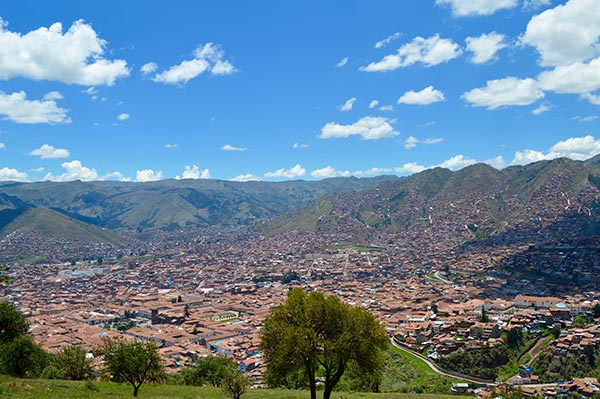Trip Report: Alternative Winter Break in Peru

- Read Cody Winstead’s report on the Peru trip »
- Read Sam Brown’s report on the Peru trip »
- Read Nick Kivi’s report on the Peru trip »
- Read Zak Pasternak’s report on the Peru trip »
- Read Ben Jacob’s report on the Peru trip »
- Read Zach Bingham’s report on the Peru trip »
- Read Evans Gritton’s report on the Peru trip »
- Read Quillen Blalock’s report on the Peru trip »
- Read Ethan Bowman’s report on the Peru trip »
- Read Andy Skipper’s report on the Peru trip »
- Read Andrew Vick’s report on the Peru trip »
- Read Joel Weber’s report on the Peru trip »
On December 11, 2015, TCE Global Initiatives embarked on its largest Alternative Winter Break to date, to Cuzco, Peru, with twenty students. Those participating in the trip were: nuclear engineering major Zach Bingham; aerospace major Gary Collins; industrial major Matt Poligone; computer science majors Joseph Connor and Jared Smith; biomedical majors Trevor Hepburn and Kristina Bridgwater; materials science majors Evans Gritton, Connor Carr, and Nick Kivi; electrical engineering majors Quillen Blalock and Sam Brown; mechanical engineering majors Jay Fitzsimmons, Andrew Vick, and Ben Jacob; and chemical engineering majors Ethan Bowman, Zak Pasternak, Andy Skipper, Joel Weber, and Cody Winstead. Judith Mallory, TCE International Coordinator, led the trip, along with Max Pridgen, mechanical engineering masters student.
The trip from the US into Cuzco took about twenty hours. There was quite a bit of altitude change very early in the trip, as the group went from Lima, elevation 505 feet, to Cuzco, elevation 11,200 feet. The trip was culture‐filled with many tours of sites of historic interest, as well as the chance to work with locals on the project.
Located in southeastern Peru, near the Urubamba Valley of the Andes mountain range, Cuzco (the Spanish spelling) is the capital of the Cusco Region as well as the Cusco Province. The city’s population is around 435,000. The site was the historic capital of the Inca Empire from the 13th into the 16th century until the Spanish conquest. In 1983, Cusco was declared a World Heritage Site by UNESCO. It is the tourist capital of the continent, with around 2 million visitors a year. Cuzco stands on layers of cultures, with the Tawantinsuyu (old Inca Empire) built on Killke (pre‐Inca inhabitants of the area) structures, and the Spanish replacing indigenous temples with Catholic churches, and palaces with mansions.
The Republic of Peru is one of the most biodiverse on the planet. Almost 80% of the world’s recognized ecological zones can be found in Peru as well as twenty‐eight of its thirty‐two climates. Main economic activities include mining, manufacturing, agriculture, and fishing, and the country has a poverty level around 25.8%. The Peruvian population, estimated at 31.2 million in 2015, is multiethnic, including Amerindians, Europeans, Africans, and Asians. The principal spoken language is Spanish, although a significant number of Peruvians speak Quechua or other native languages.
After resting and adjusting to the altitude for the remainder of the day of arrival, the group spent the next day on a “City Tour.” This was in fact a tour of what would have been Cuzco several hundred years ago. The first stop was the archaeological site of Saqsaywaman, which means “satiated falcon” in the Quechua language. With origins in the 15th century, it served as a religious, astronomical, and funeral site. Much of the stone was taken from here to build structures in modern‐day Cuzco. It took 20,000 workers seventy‐five years to complete this site, which contains a single stone weighing 124 tons.
From there, the group proceeded to the ruins of Q’enqo, meaning labyrinth, or zigzag, in Quechua. Mummification of royals took place here, in a process expanding over three weeks to a month. Bodies were posed in the fetal position, in order to continue a new life in the spiritual world. Llamas were possibly sacrificed here as well, evidenced by bones found in archaeological expeditions.
The next attraction was another ruins site, Puca Pucara, from where the Incan Trail, also called the Royal Trail, may be observed. All trails of the day connected to Cuzco, and sojourners would stop here to “camp” in a rustic setting. Nearby, the group visited Tambomachay, which consists of a series of aqueducts, canals, and waterfalls that run through the terraced rocks. The function of the site is uncertain: it may have served as a military outpost guarding the approaches to Cuzco, as a spa resort for the Incan political elite, or both.
Next up on the tour was a short visit to the Cristo Blanco, or white Christ statue. The Cristo Blanco was a thank you gift to Cuzco from Arabic Palestinians who sought asylum there during World War II. It is a smaller replica of the more famousChristo Redentor statue of Rio de Janeiro, Brazil.
After lunch, the tour moved into Cuzco proper, starting with Qurikancha (meaning “Golden Enclosure”) and the Convent of Santo Domingo, an interesting juxtaposition of an Incan structure with a convent/monastery built around it. The convent is home to twenty‐one Dominican priests, representing the first holy order to come to South America. The Incas used a stapling technique to join the stones of the temples, which was meant to aid in protection from seismic activity. The convent is known for its vast collection of paintings from the Cuzco School, one of which depicts Jesus and the apostles eating a Last Supper of Guinea pig, a common dish of Peru and native to the Andes. The day’s tour concluded with a visit to the Plaza de Armas, which means “Square of the Warrior,” an iconic and significant feature of Cuzco.
For the next three days, the group was involved in the service project. Many indigenous families in Peru engage in the ancient practice of cooking on the floor. This presents an array of problems, including backaches, burns, lung disease, and respiratory problems, as well as deforestation, due to the trees that must be cut to fuel this energy‐inefficient practice. The challenge for the group was to construct safe cook stoves for use by these families, who live in the Urubamba Valley about forty‐five minutes away from Cuzco. Along the drive to the project, the group was able to see a finished and operational stove in a home; Guinea pigs were observed eating alfalfa on the kitchen floor at this location. Further down the road, the work on the stoves began in earnest. The first order of business in constructing stoves of this type is to mix the “baro” or adobe‐like mud. Soil, which in this area is high in clay content, is gathered into a pile, into which water is mixed to give a spreadable consistency, and straw or animal hair added as a binder. This mixture is used to hold the fired clay bricks in place as well as smeared over the exterior when the stove is finished. A semi‐circular brick chimney carries the smoke outside. The group was able to construct 13 stoves for the project, coordinated by the community and Peru Pro World.
The final day of the trip consisted of the Sacred Valley Tour, and began with a visit to the ruins of Pisaq, an imposing mountainside structure with trails and steps leading to a former military installation. Armies built the town in the 15th century to protect the capitol. About 75% of the town was dedicated to agriculture and this is likely where the Incans domesticated the potato, of which there are 3,000 varieties in Peru. Over 125 types of vegetation grew here on agricultural terraces oriented to the sunrise, each situated for slight differences in temperature and sunlight. In the evenings, heat emanated from the stones supporting the terraces, creating microclimates. There is a five degree (Celsius) variation in temperature from bottom to top. Over 10,000 tombs are located at the cemetery here, making Pisaq the largest burial ground in the country. Each tomb would contain three or four bodies, some of which had to be carried up the mountainside by llamas or lowered from above using ropes. Only the royals were mummified, and the rest of the inhabitants buried in tombs, posed in the fetal position. Pisaq was constructed in the shape of the condor, a bird sacred to the Incas and believed to transport the spirits of the dead to the new world. A funeral fountain was used to wash bodies prior to entombment.
Next came a short stop at the Pisac Markets, selling all manner of indigenous goods, including artwork, musical instruments, alpaca blankets, scarves, and sweaters. After lunch at a restaurant in a pastoral setting, there was about an hour’s drive to reach another site of archaeological ruins, Ollantaytambo, constructed in the late 15th century. Once a stronghold of Inca resistance to Spanish colonization, the site is surrounded many meters above by a glacial ring, the melting of which is channeled through the town below by a series of aqueducts built right into the cobblestone streets and sidewalks. Hundreds of stairs lead to a military lookout at the top, by way of the never‐completed Temple of the Sun, consisting of The Wall of the Six Monoliths. Exactly how the stones were so perfectly shaped is unknown, since they were carved out of red porphyry, a stone as hard as granite. The great mystery of Ollantaytambo is how these six fifty‐ton stones were moved to their present location, since the quarry from which they came has been definitively identified at Chachicata four miles away across the valley on the opposite mountainside. Opposing this hillside containing the temple is another slope containing a crop storage area. Due to the mountainside location, the great amount of wind, and the low temperature, it acted as a refrigerator, with the ability to store potatoes up to five years. Rock formations on this side resemble faces looking over Ollantaytambo.
About an hour down the road was the final stop of the Sacred Valley tour, Chinchero, a small town known for textiles. The group was given hot chamomile tea while listening to an indigenous woman in traditional Andean garb tell how wool is extracted from the alpaca or sheep, cleaned, spun into yarn, and dyed using vegetables and even a parasite from the cactus. It is then either woven or knitted into a variety of items, such as ponchos, hats, tablecloths, and so forth. Many of these items were offered for sale after the presentation.
After rest the next day and last‐minute sightseeing, half of the group departed for home. The other half stayed for an optional side trip to Machu Picchu, four hours away from Cuzco.
